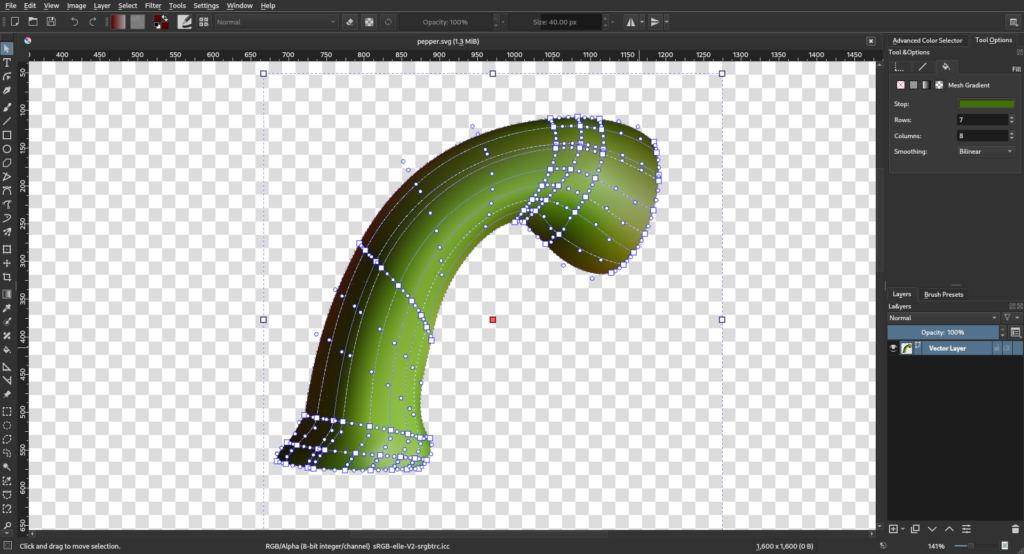Krita is releasing the first beta for version 4.4.2.

The Krita team released the first beta of their new version 4.4.2. It comes with a lot of bug fixes but also with a few new interesting features. Krita is a software for digital painting, but its features make it a good alternative to work with architectural visualization.
Krita has a layer system and blend modes that resembles GIMP and other proprietary software for image editing. One of its main advantages is that you can work with filter layers in a non-destructive way (which GIMP currently does not support). This makes Krita a nice tool to improve your renders with post-production.
Although Krita is more suited to work with raster images, it also has some vector tools as well. You can quickly create shapes, change strokes and fills like Inkscape. For that, besides using Krita for architectural visualization, you can use it for architecture drawings, axonometric and diagrams. Having both raster and vector in the same software makes it very practical.
You can also use Krita for its greater strength, as a digital paint tool. You can use it to create artistic perspectives. Krita has a set of assistant tools that helps you with guides for axonometric or vanishing points. If you prefer hand-drawn images, you can combine Krita with a drawing table and have a nice experience.
One of the highlights of Krita version 4.4.2 is the Mesh Gradients tool. It works with vectors and gives you the power to create complex gradient fills. In addition, it is compatible with Inkscape. Another great feature that comes with this release is the Mesh Transform. This gives you the ability to apply transformations to a layer based on a shape. This can be very useful to place an object in perspective or apply round transformations. The complete list of features and bug fixes you can find here.
More reading:
- Visit Krita official website.
- Join this discussion about Krita for architecture.
- Take a look at this tutorial, by JQL, on using Krita to create seamless textures.


